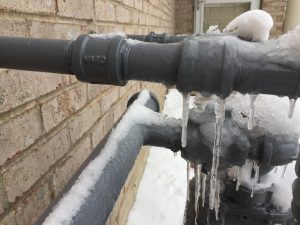Ways to Prevent Frozen Pipes in Cold Weather: Professional Guidance
Ways to Prevent Frozen Pipes in Cold Weather: Professional Guidance
Blog Article
We have discovered this great article about Helpful Tips to Prevent Frozen Pipes this Winter directly below on the internet and concluded it made perfect sense to write about it with you over here.

Cold weather can damage your plumbing, especially by freezing pipelines. Below's how to prevent it from occurring and what to do if it does.
Intro
As temperature levels decline, the risk of frozen pipes boosts, potentially resulting in costly repairs and water damages. Understanding how to prevent icy pipes is vital for home owners in chilly climates.
Understanding Icy Pipes
What creates pipes to ice up?
Pipelines ice up when exposed to temperature levels listed below 32 ° F (0 ° C) for prolonged periods. As water inside the pipes ices up, it expands, putting pressure on the pipe wall surfaces and potentially causing them to burst.
Risks and damages
Icy pipelines can result in supply of water interruptions, residential or commercial property damage, and pricey fixings. Ruptured pipelines can flooding homes and create extensive architectural damages.
Signs of Frozen Piping
Determining icy pipes early can prevent them from bursting.
Exactly how to recognize frozen pipelines
Look for reduced water circulation from taps, uncommon smells or noises from pipes, and visible frost on subjected pipelines.
Avoidance Tips
Insulating susceptible pipes
Wrap pipes in insulation sleeves or use heat tape to protect them from freezing temperature levels. Concentrate on pipelines in unheated or outside areas of the home.
Heating techniques
Maintain interior spaces appropriately warmed, particularly areas with pipes. Open cupboard doors to permit cozy air to distribute around pipelines under sinks.
Securing Outside Plumbing
Garden hose pipes and outdoor faucets
Separate and drain pipes yard pipes prior to winter months. Set up frost-proof spigots or cover outdoor taps with insulated caps.
What to Do If Your Pipes Freeze
Immediate activities to take
If you believe frozen pipelines, keep taps open up to eliminate pressure as the ice melts. Make use of a hairdryer or towels soaked in hot water to thaw pipelines gradually.
Long-Term Solutions
Structural changes
Consider rerouting pipes away from outside wall surfaces or unheated locations. Include added insulation to attics, basements, and crawl spaces.
Updating insulation
Purchase premium insulation for pipelines, attics, and wall surfaces. Appropriate insulation assists preserve constant temperatures and decreases the danger of icy pipelines.
Final thought
Stopping frozen pipes needs positive steps and quick feedbacks. By comprehending the reasons, indications, and safety nets, house owners can shield their pipes during winter.
5 Ways to Prevent Frozen Pipes
Drain Outdoor Faucets and Disconnect Hoses
First, close the shut-off valve that controls the flow of water in the pipe to your outdoor faucet. Then, head outside to disconnect and drain your hose and open the outdoor faucet to allow the water to completely drain out of the line. Turn off the faucet when done. Finally, head back to the shut-off valve and drain the remaining water inside the pipe into a bucket or container. Additionally, if you have a home irrigation system, you should consider hiring an expert to clear the system of water each year.
Insulate Pipes
One of the best and most cost-effective methods for preventing frozen water pipes is to wrap your pipes with insulation. This is especially important for areas in your home that aren’t exposed to heat, such as an attic. We suggest using foam sleeves, which can typically be found at your local hardware store.
Keep Heat Running at 65
Your pipes are located inside your walls, and the temperature there is much colder than the rest of the house. To prevent your pipes from freezing, The Insurance Information Institute suggests that you keep your home heated to at least 65 degrees, even when traveling. You may want to invest in smart devices that can keep an eye on the temperature in your home while you’re away.
Leave Water Dripping
Moving water — even a small trickle — can prevent ice from forming inside your pipes. When freezing temps are imminent, start a drip of water from all faucets that serve exposed pipes. Leaving a few faucets running will also help relieve pressure inside the pipes and help prevent a rupture if the water inside freezes.
Open Cupboard Doors
Warm your kitchen and bathroom pipes by opening cupboards and vanities. You should also leave your interior doors ajar to help warm air circulate evenly throughout your home.

As a person who reads on 6 Ways to Prevent Frozen Pipes, I was thinking sharing that excerpt was necessary. Sharing is nice. Who knows, you may just be helping someone out. Thank-you for going through it.
Explore Now Report this page